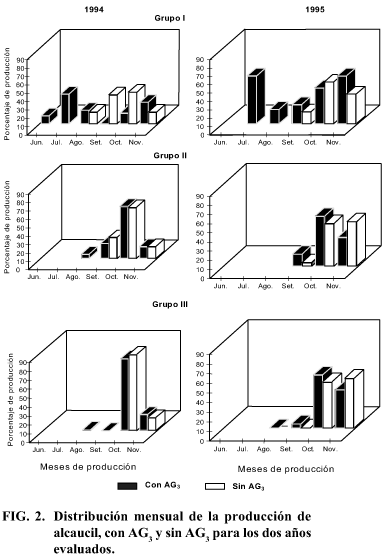The production of globe artichoke (Cynara scolymus L.) in the Horticultural Rosary Belt (33º 1' S.L and 60º 59' W.L) is concentrated from August to October. In order to increase the profitability it is necessary to bring toward the crop date to the months of higher prices, which could be achieved with the pulverisation of exogenous gibberellic acid (GA3). The behaviour of cultivars grouped according to their precociousness as compared to the application of GA3 as well as effect on the gross revenue were evaluated. A randomised complete block design with two replications was used. Fifty ppm of GA3 in April supplemented with 25 ppm were applied in May of 1994 and 1995. The number of heads per hectare, the average weight, the head diameter and height, yield, the average weight of the first range head, days to crop and crop days, were analysed through an ANOVA with 2 classification criteria for each year and in a combined year analysis. The application of GA3 in 1994 brought the production 52 days forward for the group I, 6 days for group II and only 3 days for group III, extending the crop days in 60, 8 and 3 days, respectively, showing equal trend in 1995. There were no significant modifications for the rest of the variables in the two trial years. The application of GA3 generated an increase in gross revenue, depending on its magnitude, on the evaluated years and on the analysed group.
Cynara scolymus; precociousness

 Application of gibberellic acid in globe artichoke
Application of gibberellic acid in globe artichoke

